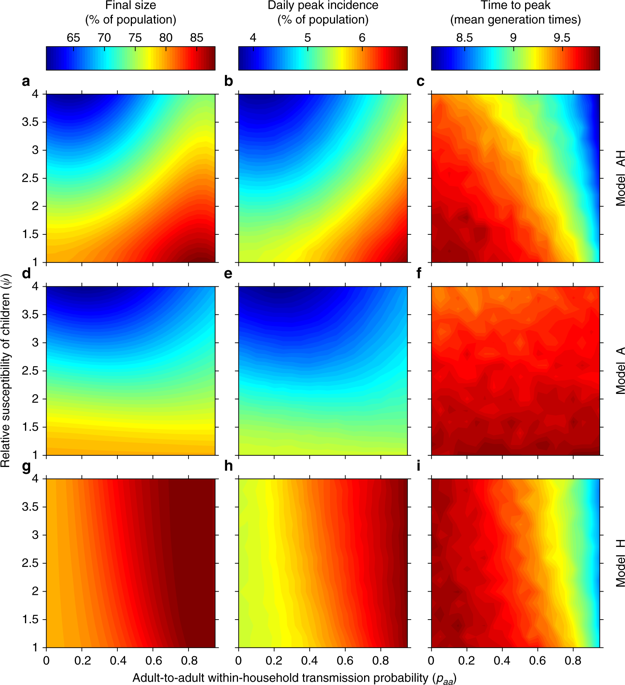当前位置:
X-MOL 学术
›
Nat. Commun.
›
论文详情
Our official English website, www.x-mol.net, welcomes your feedback! (Note: you will need to create a separate account there.)
Systematic selection between age and household structure for models aimed at emerging epidemic predictions.
Nature Communications ( IF 16.6 ) Pub Date : 2020-02-14 , DOI: 10.1038/s41467-019-14229-4 Lorenzo Pellis 1, 2, 3 , Simon Cauchemez 4 , Neil M Ferguson 3 , Christophe Fraser 5
Nature Communications ( IF 16.6 ) Pub Date : 2020-02-14 , DOI: 10.1038/s41467-019-14229-4 Lorenzo Pellis 1, 2, 3 , Simon Cauchemez 4 , Neil M Ferguson 3 , Christophe Fraser 5
Affiliation

|
Numerous epidemic models have been developed to capture aspects of human contact patterns, making model selection challenging when they fit (often-scarce) early epidemic data equally well but differ in predictions. Here we consider the invasion of a novel directly transmissible infection and perform an extensive, systematic and transparent comparison of models with explicit age and/or household structure, to determine the accuracy loss in predictions in the absence of interventions when ignoring either or both social components. We conclude that, with heterogeneous and assortative contact patterns relevant to respiratory infections, the model's age stratification is crucial for accurate predictions. Conversely, the household structure is only needed if transmission is highly concentrated in households, as suggested by an empirical but robust rule of thumb based on household secondary attack rate. This work serves as a template to guide the simplicity/accuracy trade-off in designing models aimed at initial, rapid assessment of potential epidemic severity.
中文翻译:

针对新兴流行病预测模型的年龄和家庭结构之间的系统选择。
已经开发了许多流行病模型来捕获人类接触模式的各个方面,这使得模型选择在适合(通常很少)早期流行病数据的情况下同样具有挑战性,但在预测方面却具有挑战性。在这里,我们考虑了新型直接传播感染的入侵,并对年龄和/或家庭结构明确的模型进行了广泛,系统和透明的比较,以在忽略干预措施时(忽略任何一个或两个社会因素时)确定预测的准确性损失。我们得出的结论是,由于与呼吸道感染相关的异构和分类接触方式,模型的年龄分层对于准确预测至关重要。相反,只有当传播高度集中在家庭中时才需要家庭结构,根据经验性但可靠的经验法则(基于家庭二次攻击率)提出。这项工作可作为指导设计模型的模板,以指导简单/准确地权衡,以初步,快速评估潜在的流行病严重性。
更新日期:2020-02-14
中文翻译:

针对新兴流行病预测模型的年龄和家庭结构之间的系统选择。
已经开发了许多流行病模型来捕获人类接触模式的各个方面,这使得模型选择在适合(通常很少)早期流行病数据的情况下同样具有挑战性,但在预测方面却具有挑战性。在这里,我们考虑了新型直接传播感染的入侵,并对年龄和/或家庭结构明确的模型进行了广泛,系统和透明的比较,以在忽略干预措施时(忽略任何一个或两个社会因素时)确定预测的准确性损失。我们得出的结论是,由于与呼吸道感染相关的异构和分类接触方式,模型的年龄分层对于准确预测至关重要。相反,只有当传播高度集中在家庭中时才需要家庭结构,根据经验性但可靠的经验法则(基于家庭二次攻击率)提出。这项工作可作为指导设计模型的模板,以指导简单/准确地权衡,以初步,快速评估潜在的流行病严重性。


























 京公网安备 11010802027423号
京公网安备 11010802027423号